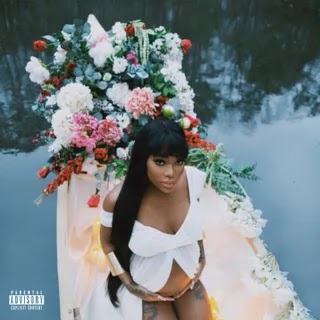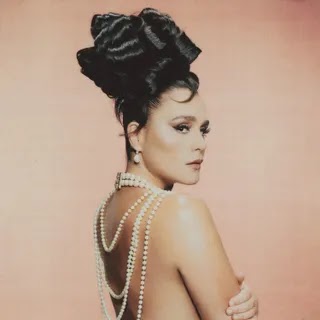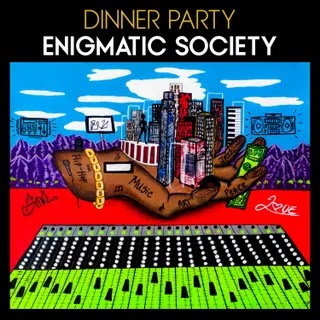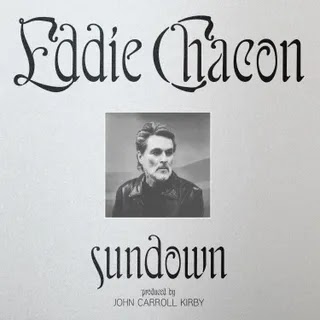Each Sunday, Pitchfork takes an in-depth look at a significant album from the past, and any record not in our archives is eligible. Today we revisit Kesha's whiskey-soaked 2010 debut, a ridiculously fun and somewhat fraught album whose garish aesthetic is being channeled anew.
Squinting at the paper in front of him, the Pulitzer Prize-winning poet Paul Muldoon recites a few lines in a halting, soporific tone, the kind one expects from an aging humanities professor, which he is. “I’m talking about everybody getting”—he pauses, leaning forward to verify what he’s reading—“crunk, crunk. Boys try to touch my junk, junk.” The year is 2010. Muldoon and his tweed blazer have been summoned by Princeton University’s humor magazine for an arch literary critique of Kesha’s “TiK ToK,” which a student introduces deadpan as “one of the most seminal, interesting, and frankly deeply beautiful songs of the last 20 years.” The segment juxtaposes the mannered rhetoric of the Ivy League with Kesha’s dippy slang. It’s intended to be clever, signaling that these men are attuned to a class and culture and far above her, blah, blah, blah. They sound like total losers.
“TiK ToK”—that wretched and awesome concoction of white-girl rapping, lurid Auto-Tune, and ridiculous quips—was the 22-year-old Kesha’s breakthrough single. By her account, it was inspired by an epic morning when she woke up “surrounded by a bunch of hot babes” and felt she was living it up like Diddy. (Hence the single’s indelible first line.) Immediately, she established herself as everything a good girl shouldn’t be: insolent, hedonistic, and trashy, with a devil-may-care approach to dental hygiene. She droned on about clothes and phones, and deployed vernacular (“crunk” and “errybody” and “po-po”) clumsily borrowed from hip-hop. The single seemed almost designed to irritate: because of Kesha’s fried, bratty voice, or her “oh, whoa, whoa, oh”s that resembled yodeling, or her twisted suggestion that she was attracted to Mick Jagger. It was the first No. 1 hit of the 2010s, one of the era’s many glorious, stupid anthems about getting schwasted because YOLO. When asked why her music resonated, Kesha replied pithily: “It’s not pretentious …. When there’s a recession and times can be hard, dancing is free.”
In a perfect bit of mythology, Kesha Rose Sebert was allegedly born at a party in the San Fernando Valley—a place that looms large in the nightmares of misogynists and pedants because it’s where young women “like” and “um” freely. She didn’t know her father. Her mother, Pebe Sebert, was the bohemian songwriter who co-wrote the 1978 country single “Old Flames Can’t Hold a Candle to You,” which became a No. 1 hit in the hands of Dolly Parton. After securing a publishing deal, Pebe relocated the family to Nashville, often taking Kesha and her brothers to recording studios. She and Kesha would work on songs together for fun after school, eventually co-writing three tracks that appear on Kesha’s debut, Animal.
The family was poor, surviving for many years on food stamps and welfare. Kesha has said that one of her first memories was being told by her mom that if she wanted a kitty-cat stuffed animal at Target, she’d have to steal it. But it was fun to be broke, as the singer reflected in her illustrated autobiography, My Crazy Beautiful Life: “I love making something beautiful out of things that others have thrown away.” This scrappiness, and the refusal to equate happiness with money, would permeate Kesha’s artistic identity—from her crummy bargain-bin aesthetic to the ironic dollar sign she’d insert into her name (and later remove), to the insurrectionary spirit of “Party at a Rich Dude’s House,” which sees her “pissin’ in the Dom Perignon.” In 2005, the Seberts appeared on the reality show The Simple Life for an episode in which Paris Hilton and Nicole Richie attempt to find Pebe a boyfriend. Years later, Entertainment Weekly asked Kesha whether she still hung out with the socialites. “Oh, gross!” she replied, stressing their class differences: “Do you think that those girls dig through the garbage for their clothes?”
Despite her public reputation for being bone-headed, Kesha was smart, at least by conventional metrics. In high school, she was an International Baccalaureate student who loved physics and math and had a reported SAT score of 1500. She was set to attend Barnard College on scholarship, to study comparative religion and psychology. Then Lukasz Gottwald called.
Known professionally as Dr. Luke, Gottwald was a tutee of Swedish pop architect Max Martin who’d just scored his first big hit with Kelly Clarkson’s “Since U Been Gone.” (Clarkson did not like working with him.) Somehow, he’d gotten his hands on a two-track demo that Kesha had recorded. One of the songs was a “gobsmackingly awful trip-hop track,” a Billboard cover story revealed, in which Kesha runs out of ideas and begins to rap: “I’m a white girl/From the ’Ville/Nashville, bitch.” Nevertheless, Luke loved her “bravado and chutzpah.” The first time he rang the Sebert home, Nicole Richie hung up on him. (This was the middle of Simple Life filming.) He called again, telling Kesha he’d sign her if she moved to Los Angeles. She was 17. She did.
Once she made it there, in 2005, Luke left her to her own devices. In the beginning, she lived with a man who claimed to be her father, but when she arrived at his home and found a real-life character from The 40-Year-Old Virgin, she became convinced they weren’t related (“There’s no way that half of my DNA is made up of someone who has a video game chair,” she said). She waitressed. She lived out of her car for a while. She took modest gigs supporting other artists, writing songs for the Veronicas and singing backing vocals for Paris Hilton and Britney Spears. Other record labels wanted to sign her, but deals fell through because of her contractual ties to Dr. Luke. Still, she seemed triumphant: her gonzo Myspace profile from 2008 describes her record label as “ur mom” and her musical sound, beautifully, like “god having an orgasm.”
It’s this hubris, this crassness, this hilarity that made Kesha’s persona so engrossing. After four years in limbo, Dr. Luke asked her to sing the hook for Flo Rida’s “Right Round.” She initially wasn’t credited on the No. 1 hit, but it still brought some attention to her name. Then, with seven years of material already at her disposal, she spent 2009 working on her debut album with a production team including Dr. Luke, Max Martin, and Benny Blanco. In interviews, Kesha explains its title with ludicrous anecdotes about “almost [getting] eaten by a barracuda” or wanting parrots named Wayne and Garth. But the real implication of Animal is clear: go feral, she urges, surrender to your most primal instincts.
And so the album throws itself into loving and fucking and dancing, anchored by buzzing, acid-bright electronics and booming four-on-the-floors. Call it consistency or repetitiveness: the songs continuously circle back to the same topics—Jack Daniels and “sick obsession”s, broken bottles and glitter strewn across the floor. It was part of a wave of bullish turbo-pop driven by the spiritual need to escape a bummer recession; besides, maybe the Mayans were right and the world really would end in 2012. A too-tipsy Gaga urged herself to “just dance.” The Black Eyed Peas vowed to burn the roof. Then, just in time, Kesha rolled in in her gold Trans Am and proclaimed that the party couldn’t start without her. Even her sad heartbreak songs (“Hungover,” “Dancing With Tears in My Eyes”) existed in the raver universe.
Sometimes Animal fit the times too well: Several songs sound like they could have been shipped off other Dr. Luke and Max Martin collaborators, like P!nk or Katy Perry. But the record is also stranger than you might imagine; music critic Ann Powers once called moments of it “nearly as experimental as an Animal Collective record.” On “Take It Off,” Kesha is titillated by the “freaks” at a drag show, and amplifying the strangeness, the song turns an old snake-charmer melody into a mutant croak. Her kiss-off to creepy old men, “DINOSAUR,” oscillates from sassy cheerleader chants (“You need a CAT scan!”) to a whistling instrumental that evokes Lipps Inc.’s “Funkytown.” Of course, it starts off with a campy Jurassic Park roar.
Weirdest of all is “Stephen,” a fanatical plea to a guy Kesha says she’s been “stalking” since she was 15. It opens with stacked vocals à la “Fat Bottomed Girls” and then becomes teen girl peppy: “Why won’t you call me?” Kesha presses, in a spine-chillingly grating mew, hypothesizing the answer in a clipped British accent: “You might think I’m ... crazy.” Puckish details like these carry the record: a little “holla!” sprinkled in a verse, a slurred and giggly “I like your beard” thrown at the end of song.
Whether it was whimpered obsession or boorish indifference, Animal exhibited a silly, puerile attitude toward the opposite sex. One of Kesha’s guilty pleasures was Usher’s “OMG,” which sounds like it was written by a boy who just discovered masturbating: “Honey got some boobies like wow oh wow,” Usher warbled. (“Just the fact that he uses the word ‘boobies’ is horribly amazing,” Kesha told SPIN.) Equally middle-school commentary abounds on Animal. The extended version includes a track called “c u next tuesday,” in which she accuses a guy of being a—well, look at the acronym. On “Kiss n Tell” she sneers at a cheating boyfriend for being a “tool” not a “baller,” and—in the ultimate shot to the adolescent male ego—accuses him of acting like a “chick” and a “slut.”
Behind her asinine attitude was a feminist project: Kesha believed that women had the right to be as lawless, coarse, and pimp-like as dudes. On “Blah Blah Blah,” she found her counterpart in crunkcore icons 3OH!3, the kind of dirtbags who’d slap your ass outside of Hot Topic and then saunter over to the food court for a celebratory smoothie. But instead of the guys being sleazy, it’s Kesha who’s impatient to get some. “Don’t be a little bitch with your chit chat/Just show me where your dick’s at!” she eye-rolls. Kesha thought that if men like LMFAO could make songs “all about how women are pieces of meat,” she should give them a taste of their own medicine. And so “Boots & Boys” takes a literal approach to objectification by equating men to footwear. But her oafish jokes often relied on crude gender essentialism, as shown worst in the line “I just can’t date a dude with a vag” on her later song “Grow a Pear.”
Ostensibly, Animal should have aged poorly: for one, who says “steez” and “crackhead” anymore? Its garish, pitch-corrected vocals came in between JAY-Z declaring the “Death of Auto-Tune and Time crowning the technology one of the “50 Worst Inventions.” But now the stigma has evaporated, and absurdity and obnoxiousness are in vogue. Kesha committed boldly to brainlessness, long before the bimbo revival and aspirational claims to being “no thoughts, head empty.” Her brand of robo-shamelessness has been embraced especially by hyperpop, which is bathed in 2010s nostalgia. You can hear her in the airhead pop of Slayyyter and Ayesha Erotica, both of whom infuse their bubblegum tracks with tawdry flair. PC Music leader A.G. Cook has remixed “Stephen.” But the most worthy heirs to Kesha’s legacy are the anarchic pop duo food house, a.k.a the producers Gupi and Fraxiom, who make smirking, willfully doltish electronica. “Tonight let’s do shit that gets us in cringe comps,” Fraxiom drones on a song that samples “Crazy Frog,” adding a Reddit-poisoned spin to Kesha’s party-all-night mutiny.
The elephant in the room is that Kesha made this record with Dr. Luke, a man who she’s accused of sexual, physical, and emotional abuse. Some of the alleged incidents occurred right after she signed her record deal, when she was just a teenager; to this day, she is still trapped in a multi-year legal dispute. This backstory has cast its shadow. As one critic wrote, echoed by many: “It’s hard now to listen to her early hits without hearing them as documents of abuse.”
This unease recalls an observation that the writer Jia Tolentino made, years ago, during the Weinstein reckoning: “One of the cruelest things about [sexual assault] is the way that [these acts] entangle, and attempt to contaminate, all of the best things about you.” What if the things you loved about Kesha were what Dr. Luke saw in her too? Her verve, her temerity, her “chutzpah,” as he highlighted. She initially chafed at some of “TiK ToK”s most memorable lyrics, worried, for example, that it didn’t make sense to brush your teeth with Jack Daniels. But Luke and Blanco kept goading her to make the song “more simple, just dumb.” When she thought of rewriting it, Luke “literally had to fight me off,” she said, good-humoredly at the time.
Besides the “gobsmackingly awful trip-hop track” that caught Luke’s eye, there was another song on Kesha’s early demo: a “gorgeously sung, self-penned country ballad,” as Billboard described. Kesha always had interests outside electro-pop; early on, she and her brother were in a punk band together, and her Myspace profile included a mile-long list of influences ranging from Boards of Canada to Regina Spektor. For the title track of Animal, which she imagined as a segue into future projects, she attempted to emulate the Flaming Lips and Arcade Fire. But, as a 2013 New Yorker profile of Dr. Luke describes, their relationship soured because she wanted her second record to be rock. He insisted that she stick to dim-witted party pop.
It’s tempting to disavow Animal because Dr. Luke wanted to keep Kesha frozen in its bacchanalian image. But it’s worth remembering the songs are hers, too—or hers, period. They tell real-life stories about being shit-talked by ex-friends, preyed on by senile old men, and having a good-ass time. And while Kesha once felt so defined by tragedy that she was afraid of being openly celebratory, she has ventured tentatively back to insouciance; she’s described the ethos of her upcoming tour as “skanky Disneyland that’s covered in glitter.” For what it’s worth, her fans still call themselves “Animals.”
Kesha knew that good times are something you have to seek for yourself, which is why one of the themes she returns to on Animal is fighting: fighting until you see the sunlight, fighting into the magic, fighting for your right to party. These are songs she wrote while piss broke, bumming around crappy bars and barely affording groceries. And yet, they are filled with wisecracking exuberance, not burdened by the anxiety of what will come tomorrow but content to make the most out of now. It’s not a novel perspective, but it resonates nonetheless. Much has been said about the sorry state of the world we’re in, the precarity that young people feel because of the economy and the climate. Animal shows you what it’s like to have little but feel it all: a lingering crush, temporary transcendence in the hands of a DJ, the thrill of going out and returning with glitter still on your face.
















0 comments:
Post a Comment